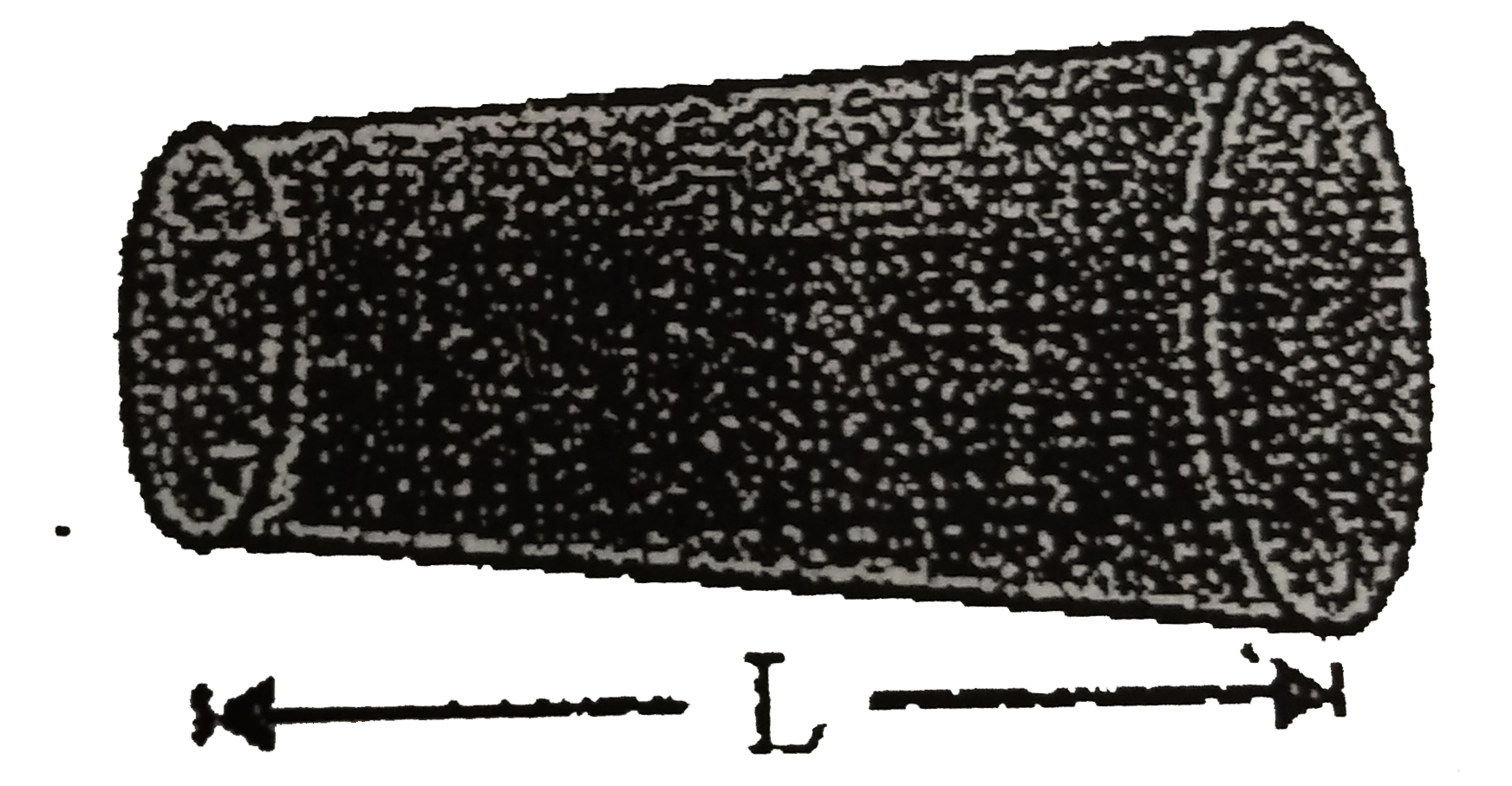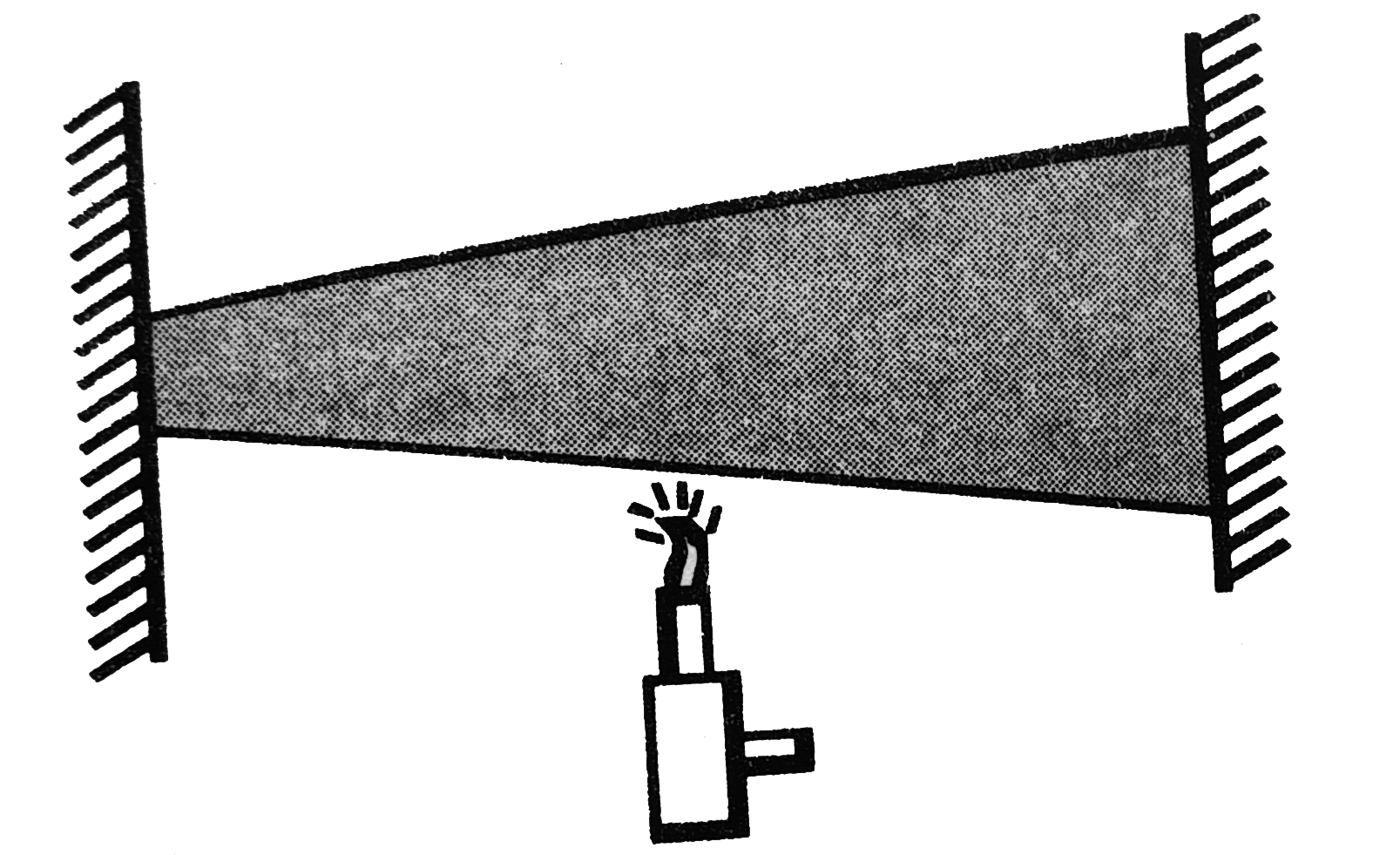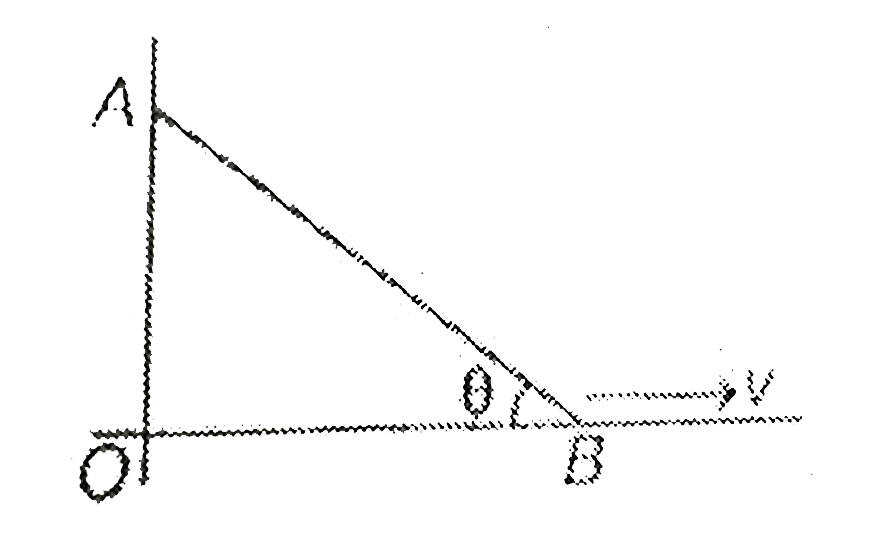there is a rod AB of uniform cross section and its centre is C. In which of the following case(s) centre of mass of the rod may lie at C.
Density of the material of rod increases continuously from A to B.
Density of the material of rod increases continuously from B to A.
Density of the material of rod increases from A to C and then decreases from C to B
Density of the material of rod decreases from A to C and then increases from C to B.
The correct Answer is:C, D
To determine in which cases the center of mass of a rod lies at its geometric center (point C), we need to analyze the mass distribution around point C for each of the given scenarios. The center of mass will lie at point C if the mass distribution is symmetrical on both sides of this point.
1. Understanding the Rod and Center of Mass:
- We have a rod AB with a uniform cross-section and a center point C. The center of mass will be at point C if the mass distribution is symmetrical around this point.
2. Analyzing Option A:
- Statement: Density of the material of the rod increases continuously from A to B.
- Analysis: The density is lowest at point A and highest at point B. This means the mass distribution is not symmetrical around point C. Therefore, the center of mass will not lie at C.
- Conclusion: Not valid.
3. Analyzing Option B:
- Statement: Density of the material of the rod increases continuously from B to A.
- Analysis: Here, the density is lowest at point B and highest at point A. Again, the mass distribution is not symmetrical around point C. Thus, the center of mass will not lie at C.
- Conclusion: Not valid.
4. Analyzing Option C:
- Statement: Density of material of the rod increases from A to C and then decreases from C to B.
- Analysis: The density increases as we move from A to C, reaching a maximum at C, and then decreases as we move from C to B. This creates a symmetrical mass distribution around point C.
- Conclusion: Valid.
5. Analyzing Option D:
- Statement: Density of the material of the rod decreases from A to C, then increases from C to B.
- Analysis: The density is highest at point A, decreases to a minimum at C, and then increases again towards point B. This also results in a symmetrical mass distribution around point C.
- Conclusion: Valid.
Final Answer:
The center of mass of the rod may lie at point C in the following cases:
- Option C: Density increases from A to C and decreases from C to B.
- Option D: Density decreases from A to C and increases from C to B.
- We have a rod AB with a uniform cross-section and a center point C. The center of mass will be at point C if the mass distribution is symmetrical around this point.
- Statement: Density of the material of the rod increases continuously from A to B.
- Analysis: The density is lowest at point A and highest at point B. This means the mass distribution is not symmetrical around point C. Therefore, the center of mass will not lie at C.
- Conclusion: Not valid.
- Statement: Density of the material of the rod increases continuously from B to A.
- Analysis: Here, the density is lowest at point B and highest at point A. Again, the mass distribution is not symmetrical around point C. Thus, the center of mass will not lie at C.
- Conclusion: Not valid.
- Statement: Density of material of the rod increases from A to C and then decreases from C to B.
- Analysis: The density increases as we move from A to C, reaching a maximum at C, and then decreases as we move from C to B. This creates a symmetrical mass distribution around point C.
- Conclusion: Valid.
- Statement: Density of the material of the rod decreases from A to C, then increases from C to B.
- Analysis: The density is highest at point A, decreases to a minimum at C, and then increases again towards point B. This also results in a symmetrical mass distribution around point C.
- Conclusion: Valid.
The center of mass of the rod may lie at point C in the following cases:
- Option C: Density increases from A to C and decreases from C to B.
- Option D: Density decreases from A to C and increases from C to B.
Topper's Solved these Questions
- SYSTEMS OF PARTICLES AND ROTATIONAL MOTIONBOOK - MODERN PUBLICATIONCHAPTER - SYSTEMS OF PARTICLES AND ROTATIONAL MOTIONEXERCISE - COMPETITION FILE (OBJECTIVE TYPE QUESTIONS (ASSERTION REASON TYPE QUESTIONS) )
10 Videos
- SYSTEMS OF PARTICLES AND ROTATIONAL MOTIONBOOK - MODERN PUBLICATIONCHAPTER - SYSTEMS OF PARTICLES AND ROTATIONAL MOTIONEXERCISE - COMPETITION FILE ( OBJECTIVE TYPE QUESTIONS (MATCHING TYPE QUESTIONS) )
3 Videos
- SYSTEMS OF PARTICLES AND ROTATIONAL MOTIONBOOK - MODERN PUBLICATIONCHAPTER - SYSTEMS OF PARTICLES AND ROTATIONAL MOTIONEXERCISE - COMPETITION FILE ( OBJECTIVE TYPE QUESTIONS (JEE (Main) & Other State Boards for Engineering Entrance) )
48 Videos
- PHYSICAL WORLD BOOK - MODERN PUBLICATIONCHAPTER - PHYSICAL WORLD EXERCISE - Revision exercises (Long answer questions)
6 Videos
- THERMAL PROPERTIES OF MATTERBOOK - MODERN PUBLICATIONCHAPTER - THERMAL PROPERTIES OF MATTEREXERCISE - CHAPTER PRACTICE TEST
15 Videos
Similar Questions
Knowledge Check
In which of the following cases the centre of mass of a rod is certainly not at its centre?
Athe density continuously increases from left to rightBthe density continuously decreases from left to righCthe density decreases from left to right upto the centre and then increasesDthe density increases from left to right upto the centre and then decreasesIn which o the following cases the centre of mass of a rod is certainly not at its centre?
Athe density continuously increases from left to rightBthe density continuously decreases from left to righCthe density decreases from left to right upto the centre and then increasesDthe density increases from left to right upto the centre and then decreasesIn which of the following cases the centre of mass of a rod is certainly not at its centre ?
Athe density continuously increases from left to rightBthe density continuously decreases from left to righCthe density decreases from left to right upto the centre and then increasesDthe density increases from left to right upto the centre and then decreases
AB is a uniformly shaped rod of length L and cross sectional are S, but its density varies with distance from one end A of the rod as ρ=px2+c, where p and c are positive constants. Find out the distance of the centre of mass of this rod from the end A.
View SolutionIn which of the following cases the centre of mass of a system is certainly not at its centre ?
View SolutionIn which of the following cases the centre of mass of a rod is certainly not at its centre ?
View SolutionA rod of length L is of non uniform cross-section. Its mass per unit length varies linearly with distance from left end. Then its centre of mass from left end is at a distance. (Take linear density at left end=0).

View SolutionA rod is made of uniform material and has non-uniform cross section. It is fixed at both the ends as shown and heated at mid-section. Which of the following are not correct?

View Solution

